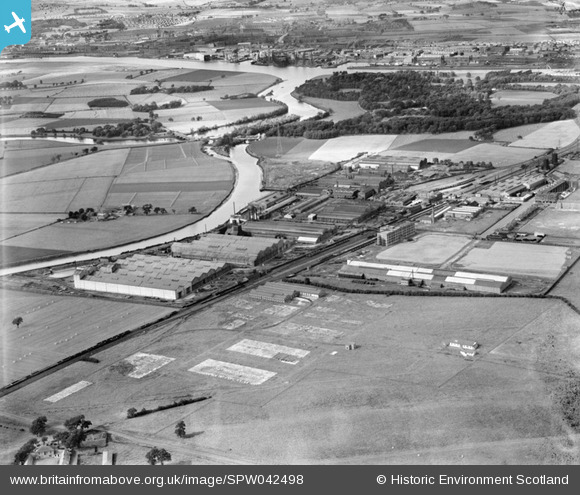spw042498 SCOTLAND (1933). Renfrew, general view, showing Babcock and Wilcox Co. Boiler Works, Porterfield Road and River Clyde. An oblique aerial photograph taken facing north.
© Copyright OpenStreetMap contributors and licensed by the OpenStreetMap Foundation. 2025. Cartography is licensed as CC BY-SA.
Details
| Title | [SPW042498] Renfrew, general view, showing Babcock and Wilcox Co. Boiler Works, Porterfield Road and River Clyde. An oblique aerial photograph taken facing north. |
| Reference | SPW042498 |
| Date | 1933 |
| Link | Canmore Collection item 1257587 |
| Place name | |
| Parish | RENFREW (RENFREW) |
| District | RENFREW |
| Country | SCOTLAND |
| Easting / Northing | 249200, 666800 |
| Longitude / Latitude | -4.4103747221069, 55.870763800701 |
| National Grid Reference | NS492668 |
Pins
 thomasmann |
Friday 4th of July 2014 11:26:49 PM | |
 Norrie P |
Friday 3rd of May 2013 03:47:21 PM | |
 bossjock |
Sunday 28th of April 2013 06:19:43 PM | |
 bossjock |
Friday 19th of October 2012 07:39:38 PM | |
 bossjock |
Friday 19th of October 2012 06:59:13 PM | |
 bossjock |
Friday 19th of October 2012 06:53:52 PM | |
 bossjock |
Friday 19th of October 2012 06:49:46 PM | |
 bossjock |
Friday 19th of October 2012 06:49:08 PM |


![[SPW019487] Babcox and Wilcox Boiler Works, Porterfield Road, Renfrew. An oblique aerial photograph taken facing east.](http://britainfromabove.org.uk/sites/all/libraries/aerofilms-images/public/100x100/SPW/019/SPW019487.jpg)
![[SPW042498] Renfrew, general view, showing Babcock and Wilcox Co. Boiler Works, Porterfield Road and River Clyde. An oblique aerial photograph taken facing north.](http://britainfromabove.org.uk/sites/all/libraries/aerofilms-images/public/100x100/SPW/042/SPW042498.jpg)